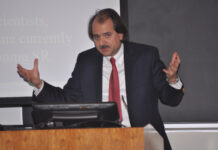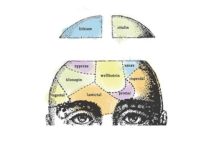Annemarie van Stee, a philosopher in the Netherlands, addresses four different myths related to cognitive neuroscience and self-understanding. Believing that cognitive neuroscience and philosophy can operate compatibly in the quest to understand selfhood, she answers the question: How much do we learn about ourselves from a glimpse into our brain?

Myth #1: Brain research helps us understand ourselves
“That’s generally not the case,” van Stee responds.
She first probes into what it is we are really trying to understand when we seek to learn about ourselves, pointing out that oftentimes, this motive is driven by practical demands. For example, a person may seek self-understanding when confronting an opportunity to move abroad for work. In order to make this decision, they become interested in gathering insights into their character as to better understand whether or not they’re cut out for such a lifestyle change. Will they miss their loved ones too much? Will they acclimate to the new culture?
Navigating practical situations inspires people to learn about themselves, but should we expect neuroscience to assist with this process? Van Stee advises against the application of cognitive neuroscience for these purposes.
“Cognitive neuroscience research is being carried out on the brain processes that make it possible for us to cherish our loved ones and reflect on ourselves. The results of this kind of research tell us about brain processes and give us insights like, ‘When looking at photos of our loved ones, there is activity in a dopamine network in the centre of the brain.’ That’s interesting to know, but that kind of knowledge about brain activity doesn’t help us make a decision about that job abroad.”
It is not that van Stee sees no opportunity for positive contribution from cognitive neuroscience, however, as exemplified in her debunking of myth #2.
Myth #2: Cognitive neuroscience contributes nothing to our self-understanding
First, there are various popular neuromyths, or what van Stee refers to as “neuro-nonsense” beliefs, which cognitive neuroscience successfully debunks. For example, the idea that left-handed individuals are more creative because the right side of their brain is dominant, a widely-circulated notion does not gain sufficient support from brain research.
Most notably, however, van Stee points out that research in cognitive neuroscience has given us valuable insight into the brain processes that are involved when we “think what we think” and “feel what we feel.” Understanding these processes becomes especially critical when people lose the ability to feel or think in certain ways, consequences that may arise from brain damage or neurological disease.
Finally, she points out that not all of our behavior is motivated by something observable or within our conscious awareness. Research in cognitive neuroscience can play in role in helping us to understand these aspects of ourselves.
“Humans are embodied beings: our body – including our brain – plays a role in our behaviour. It’s important to realise that we do a lot of things automatically, and that not everything we do is preceded by rational considerations and conscious decisions. We know that from psychological research, but neuroscience underlines it. Traditionally, that’s something philosophers have tended to forget.”
Myth #3: Love is addictive for the brain
In one study, researchers found that the same area of the brain that was activated in participants looking at a picture of someone they loved was also activated in people using cocaine. These findings were then incorrectly interpreted through the assumption that activation of the common brain region meant that the two processes, love and cocaine use, are also the same. One may conclude that love and cocaine use correlate with activity in the same cerebral network, but the results do not support claims beyond that.
Yet, this is how myths of this sort (e.g. love is addictive for the brain) come to exist, van Stee explains.
“At the end of a scientific article, neuroscientists interpret their results, and very often they make these kinds of inferences, as hypotheses about what the measured activity means. As long as you recognise that these are hypotheses and not research results, there’s nothing terribly wrong in that. But not everyone does realise it. As a result, many sensationalist reports in the media about what brain research has shown are based on invalid reverse inferences.”
Myth #4: Thanks to cognitive neuroscience, we no longer need philosophy
Van Stee clarifies that cognitive neuroscience and philosophy each explore different questions. While cognitive neuroscience is more focused on understanding the brain processes involved in our experiences, philosophy seeks to understand the structural characteristics of the experiences themselves. Philosophy also features a component of understanding and analyzing the assumptions we inadvertently make, knowledge that could really further neuroscience, van Stee remarks.
Finally, cognitive neuroscience is rooted in a positivist understanding of the way things are, a framework that philosophy might productively challenge.
Van Stee explains:
“Other philosophers study normativity, involving such questions as how we should live our lives. Neuroscientific experiments on the other hand are always about how things are, rather than about how things should be.”
****
See the original article here: https://www.universiteitleiden.nl/en/news/2017/08/a-philosophical-mythbuster















Ancient Buddhist teachings describe ‘five causal factors’ that influence the moment-by-moment manifestation of the mind-stream – one of them is “biological factors.” Check out the following article:
https://link.springer.com/article/10.1007%2Fs12144-017-9631-7
Report comment